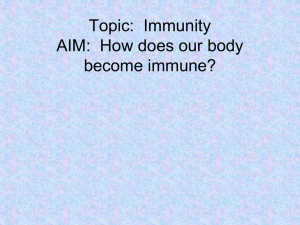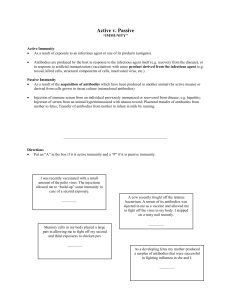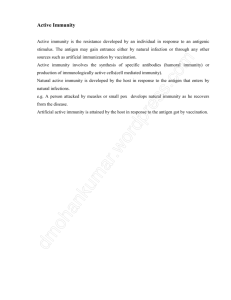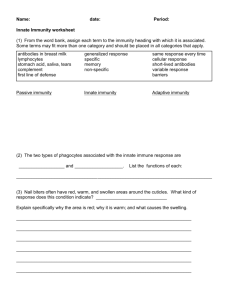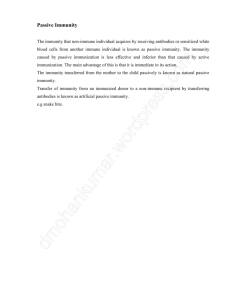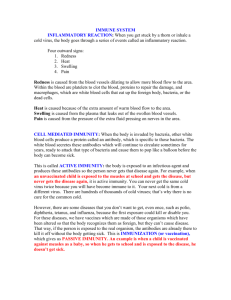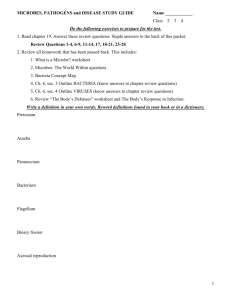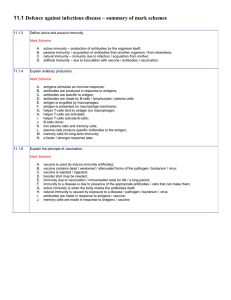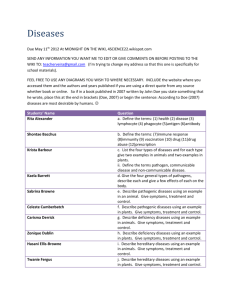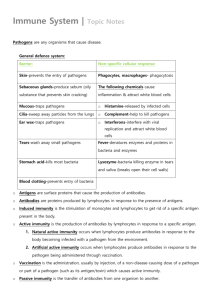16 Immunity
advertisement
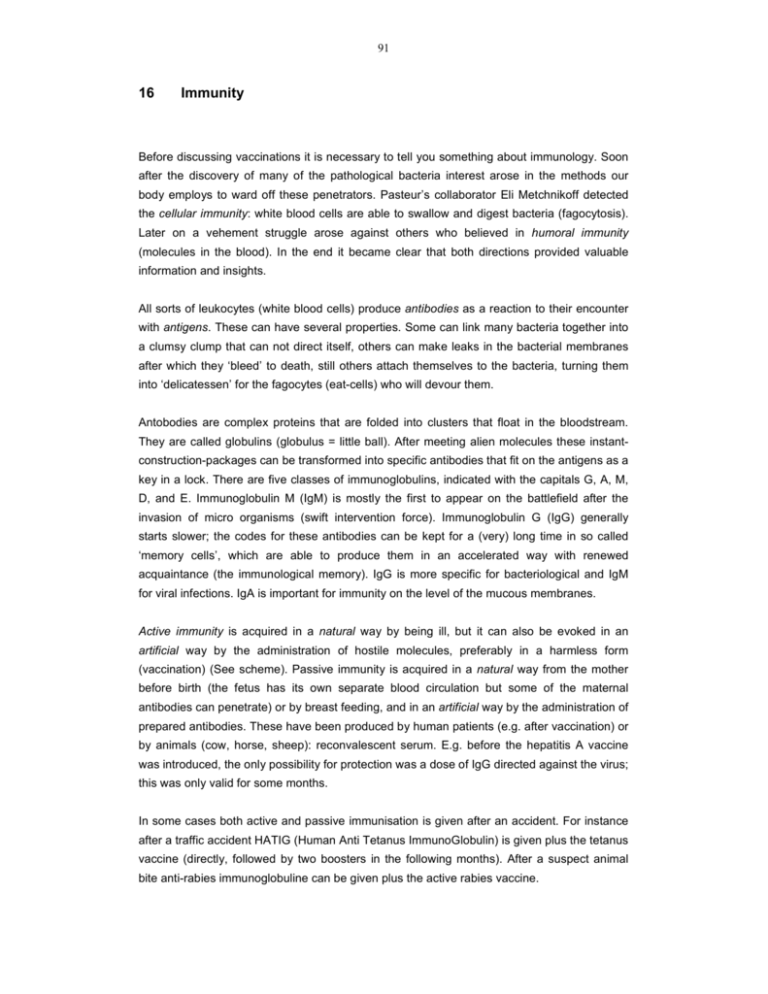
91 16 Immunity Before discussing vaccinations it is necessary to tell you something about immunology. Soon after the discovery of many of the pathological bacteria interest arose in the methods our body employs to ward off these penetrators. Pasteur’s collaborator Eli Metchnikoff detected the cellular immunity: white blood cells are able to swallow and digest bacteria (fagocytosis). Later on a vehement struggle arose against others who believed in humoral immunity (molecules in the blood). In the end it became clear that both directions provided valuable information and insights. All sorts of leukocytes (white blood cells) produce antibodies as a reaction to their encounter with antigens. These can have several properties. Some can link many bacteria together into a clumsy clump that can not direct itself, others can make leaks in the bacterial membranes after which they ‘bleed’ to death, still others attach themselves to the bacteria, turning them into ‘delicatessen’ for the fagocytes (eat-cells) who will devour them. Antobodies are complex proteins that are folded into clusters that float in the bloodstream. They are called globulins (globulus = little ball). After meeting alien molecules these instantconstruction-packages can be transformed into specific antibodies that fit on the antigens as a key in a lock. There are five classes of immunoglobulins, indicated with the capitals G, A, M, D, and E. Immunoglobulin M (IgM) is mostly the first to appear on the battlefield after the invasion of micro organisms (swift intervention force). Immunoglobulin G (IgG) generally starts slower; the codes for these antibodies can be kept for a (very) long time in so called ‘memory cells’, which are able to produce them in an accelerated way with renewed acquaintance (the immunological memory). IgG is more specific for bacteriological and IgM for viral infections. IgA is important for immunity on the level of the mucous membranes. Active immunity is acquired in a natural way by being ill, but it can also be evoked in an artificial way by the administration of hostile molecules, preferably in a harmless form (vaccination) (See scheme). Passive immunity is acquired in a natural way from the mother before birth (the fetus has its own separate blood circulation but some of the maternal antibodies can penetrate) or by breast feeding, and in an artificial way by the administration of prepared antibodies. These have been produced by human patients (e.g. after vaccination) or by animals (cow, horse, sheep): reconvalescent serum. E.g. before the hepatitis A vaccine was introduced, the only possibility for protection was a dose of IgG directed against the virus; this was only valid for some months. In some cases both active and passive immunisation is given after an accident. For instance after a traffic accident HATIG (Human Anti Tetanus ImmunoGlobulin) is given plus the tetanus vaccine (directly, followed by two boosters in the following months). After a suspect animal bite anti-rabies immunoglobuline can be given plus the active rabies vaccine. 92 Table: The four pillars of immunity. Immunity Active Passive Natural contracting the disease maternal antibodies transplacentally or via lactation Artificial vaccination reconvalescents serum procured from man or animal Some infections render a life long immunity. After artificial active immunization this is generally not the case. This implies that, depending on the disease involved, it is necessary to get a booster after a period of time (often 3, 5, 10, or 15 years). This boostering is for instance routinely done for travelers: diphtheria, poliomyelitis, and tetanus.
